Skunks
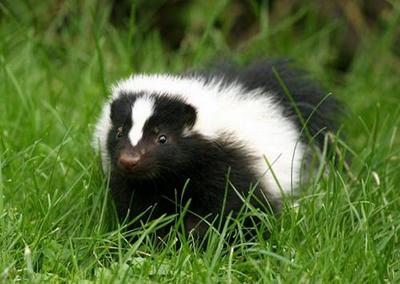
Content:
Who is the scariest animal in the world? Not a lion, not a bear, not a tiger, and not any other the most dangerous predator, but our today’s hero – a skunk. The biggest predators bypass skunk. The reason is the famous smell of skunk, so unbearable that it scares away almost everyone.
Description and Characteristics
The skunk belongs to the mammals, and until recently zoologists attributed it to the family of weasels, but now they have changed their opinions. Now it is believed that skunks form their own family of skunks.
It is easy to recognize a skunk by its color, consisting of white spots (or stripers) on a black background. Skunks have a very strong build, fluffy tail and short legs with sharp claws, perfectly adapted for digging.
Skunks have poor eyesight, but this is compensated by an excellent sense of smell and hearing.
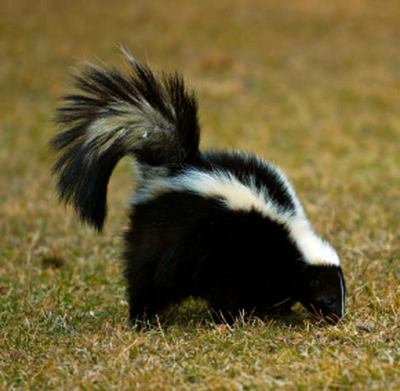
The largest of the skunk family – the horned skunks weigh up to 4.5 kg. The smallest skunk (a spotted skunk) is not heavier than 1 kg.
In general, the appearance of the skunk is very attractive; some people even have skunks as a pet, (after having solved the problem with their smell).
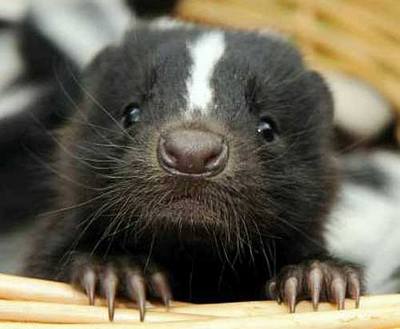
Smell
An unpleasant smell of these animals is their main characteristic feature. The source of the unpleasant smell of the skunk is a special odorous anal gland, emitting a caustic substance that actually has such a specific aroma. Moreover, the scented stream of smell can be sprayed by a skunk at a distance of 1-6 m.
In fact, the smell of skunk serves as unusual protection from predators. In case of danger, skunks don’t try to hide from enemies, but instead, raise their tail (this is a serious warning). If the warning did not help, then the skunk turns its back and shoots at the enemy with its smelly oily liquid. As a result, many predators, knowing about such a specific way of protection, prefer not to mess with a skunk at all and stay away from it.
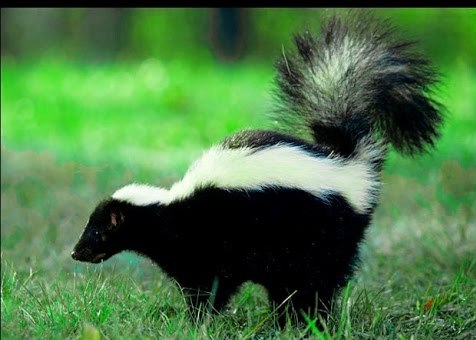
Interesting fact: the smell of the skunk’s secret is so stable that if it gets on human clothes, it is better to burn it immediately. Since all means to clean the clothes after that will only be able to disguise the unpleasant smell, but it can’t be completely removed.
Habitat
Where do skunks live? Skunks live in North America (from Canada to Mexico), in South America, and on the islands of Indonesia.
As habitats, they choose the forest area where they feel most comfortable.
Diet
What do skunks eat? The skunks are omnivorous predators. The skunk diet consists of various small rodents, frogs, and lizards. Since they are omnivorous animals, they can eat grass, leaves, various fruits and nuts besides meat.
Skunks often go on a night hunt. In order to catch the prey, they use their well-developed sense of smell and hearing. They arrange ambushes for small rodents, waiting for them, and when they appear, they make a leap, grabbing their prey with their paws and teeth.
Besides this, skunks love honey, and when a beehive comes across on their way, they will certainly ruin it. Bee bites are not terrible for them because of the thick wool.
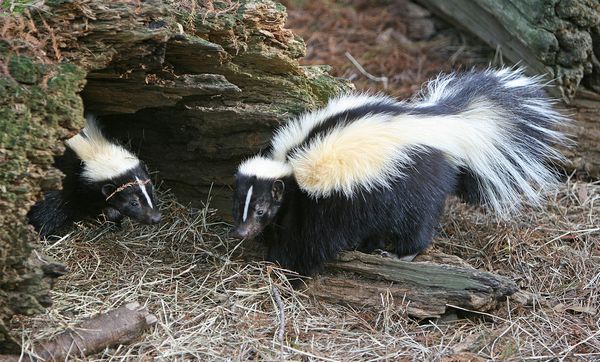
Lifespan
Under natural conditions, skunks don’t live long – two or three years, but at home, their life span can reach up to ten years.
Lifestyle
Skunks live in small families or singly. Skunks do not hibernate for the winter like bears, but, nevertheless, they spend the winter in their burrows, which they dig themselves or seize from other animals. During the summer and autumn, they try to accumulate for the winter as much as possible reserves of subcutaneous fat, with which it is much easier to get through the winter. With the onset of spring, the skunks go out of their burrows, become more active
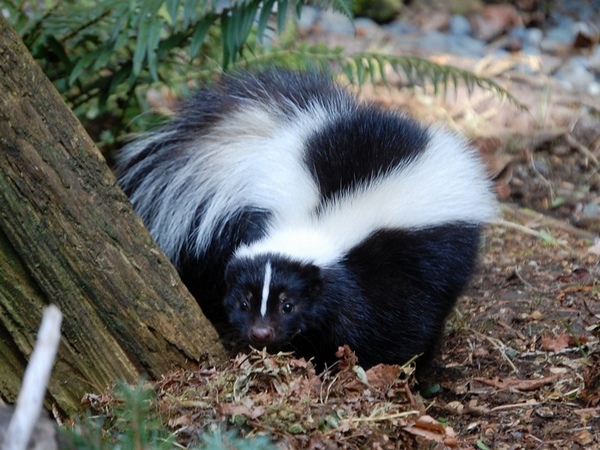
Enemies
Thanks to such an amazing “aromatic” protection, a skunk has practically no enemies in natural conditions. Sometimes young predators may attack them: foxes, coyotes, pumas, but only because of inexperience, while they are still unfamiliar with the “skunk flavors.” Some birds can hunt skunks, such as the Virginian Eagle Owl living in the USA, but only because of its weak sense of smell. The owl doesn’t feel the protective smell of the skunk.
Species
Striped Skunk
This is the most common skunk. The striped skunk lives in North America from Canada to Mexico, often settle in the forests.
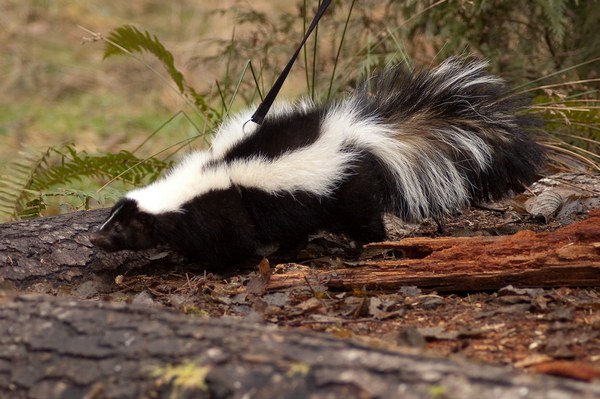
Mexican Skunk
The Mexican skunk is a close relative of the striped skunk. The Mexican skunk is distinguished by the presence of softer and longer hair. The Mexican skunk lives on the territory of Mexico and in some southern states of the USA: Arizona, Texas.
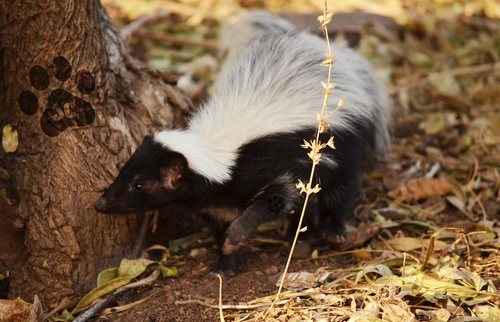
Eastern Spotted Skunk
This is the smallest skunk in the world. Besides this, the Eastern Spotted skunk has fur covered with white torn stripes, creating the illusion of spots. It lives in both Americas.
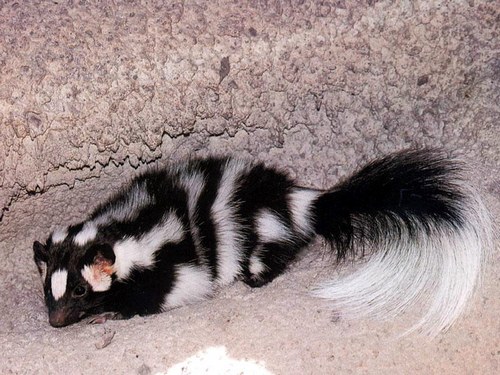
South American Skunk
The South American skunk lives in many countries in South America: Peru, Bolivia, Paraguay, Argentina, Chile. Its appearance and habits are in many ways similar to the striped skunk.
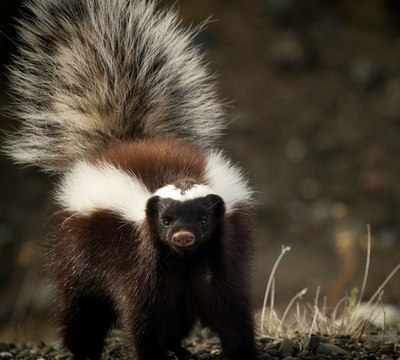
Reproduction
Skunks are polygamous animals, one male engages in sex with several females, creating a small animal harem. The mating season in skunks begins from the beginning of spring. After a short pregnancy, the females give birth to young baby skunks. On average, one skunk mother gives birth to 6-10 babies. Little skunks, like kittens, are born blind and only after a week they begin to open their eyes. At first, they are completely helpless and dependent on the mother who feeds them with milk. Then the babies begin to grow rapidly and grow stronger, and by the age of four months, they already pose a serious “odorous” danger to those around them.
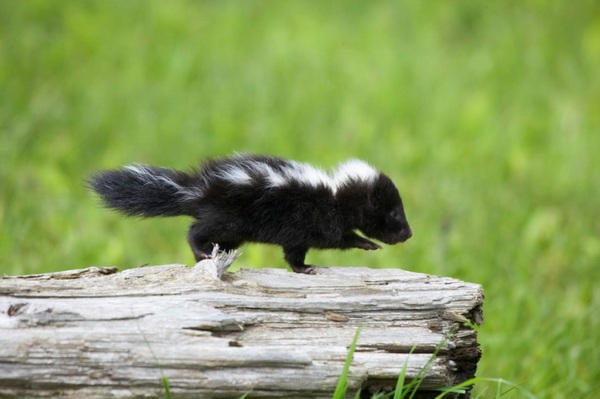
Skunk as a Pet
Some people begin to have a skunk as a pet. Why not? They are quite pleasant and cute animals. What about the smell? The solution was found, it is possible to remove the anal glands, which emit a smell, and the skunk becomes completely harmless in this regard.
The care and nutrition for the skunk are in many ways similar to those of dogs. You can feed skunks the same food that you feed your dog.
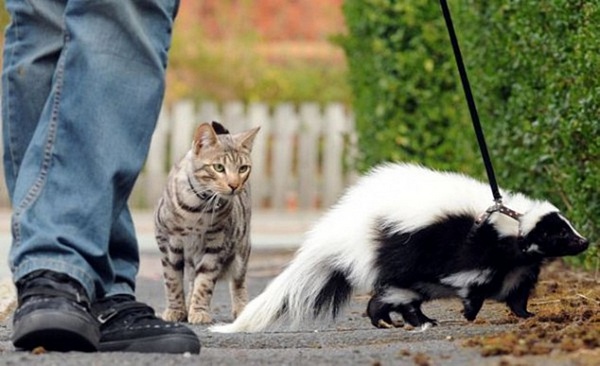
Interesting Facts
- Israeli intelligence agencies have developed a smelly weapon used to disperse demonstrators which they called – “skunk”.
- Smelling liquid from glands of skunks is used in the perfume industry.
- Skunks benefit the ecosystem by killing some harmful insects and rodents.
References and Further Reading
- “Old World skunk”. Retrieverman.net. November 2, 2015. Retrieved December 13, 2018.
- “skunk noun – Definition, pictures, pronunciation and usage notes – Oxford Advanced Learner’s Dictionary”. Oxfordlearnersdictionaries.com. Retrieved December 13, 2018.
- “SKUNK – meaning in the Cambridge English Dictionary”. Dictionary.cambridge.org. Retrieved December 13, 2018.
- “skunk – meaning of skunk in Longman Dictionary of Contemporary English – LDOCE”. Ldoceonline.com. Retrieved December 13, 2018.
- Harper, Douglas. “skunk”. Online Etymology Dictionary.
- Thwaites, Reuben Gold, ed. (1633–1634). The Jesuit Relations and Allied Documents. Travels and Explorations of the Jesuit Missionaries in New France 1610—1791. VI. Quebec.
- ADW: Mephitis mephitis: INFORMATION. Animaldiversity.ummz.umich.edu. Retrieved on April 5, 2012.
- Virtual Nature Trail. Striped Skunk. The Pennsylvania State University (2002).
- “Skunks Management Guidelines”. Ipm.ucdavis.edu.
- “Eastern Spotted Skunk”. Missouri Department of Conservation. Retrieved February 23, 2019.

Author: Pavlo Chaika, Editor-in-Chief of the journal Poznavayka
When writing this article, I tried to make it as interesting and useful as possible. I would be grateful for any feedback and constructive criticism in the form of comments to the article. You can also write your wish/question/suggestion to my mail pavelchaika1983@gmail.com or to Facebook.

